“Some very important Excel files are missing from my system; I have checked it everywhere, can’t find it. It is not even in the Recycle bin; I am a bit tensed. These files are very important to me. Can anyone suggest how I can recover them and how to keep all the data intact like the original document? It would be best if someone can suggest some free or inexpensive solutions. Thanks Already!”
The situation mentioned above is quite sensitive and requires quick, professional attention. As we can see, the data that the user has lost is very important, and the user wants to recover it in its original form. There are many ways to recover deleted Excel files, but not every method is reliable when it comes to the integrity of data.
When you delete something from your system, be it anything, it still stays on the system. Sometimes you think you have permanently deleted it, while the deleted stuff is still there in the Recycle Bin. It may also happen that the data is actually permanently deleted and is not even there in the Recycle Bin, as in the case mentioned above.
As per my analysis of the query this user has posted, this is a sensitive case. Here, I would strongly recommend using a third-party tool. All third-party tools are not reliable and free too. So, choosing the right tool is important. I recommend using Windows Data Recovery tool for the same. It is an automated tool and comes with three scanning modes depending on the severity of corruption and the requirement of the user. Yes, you can save up to 2 GB of data for free. All you need to do is Download and Install Windows Data Recovery Free Version on your system, and you are good to go.

Here you can have the preview of the recovered data and select what to recover ad proceed with saving it.
To get a clear understanding of the Windows Data Recovery tool’s role in recovering the permanently deleted Excel files, let us see its working process.
- Launch the Windows Data Recovery application. On the start screen, select the scan mode as Quick Scan.
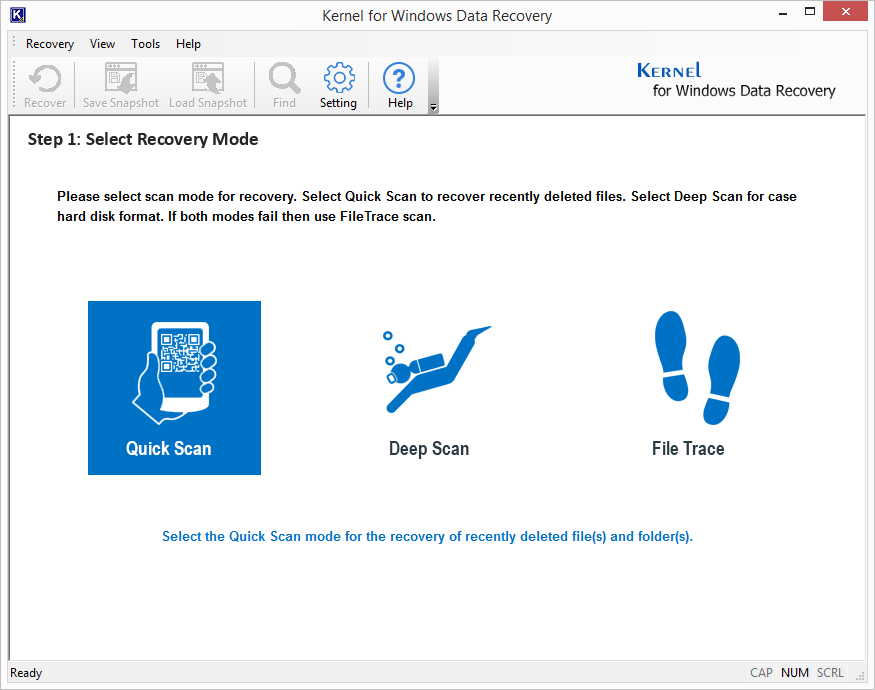
- Select the system drive to scan for deleted Excel files from the left panel, view its drive information, and click Next.
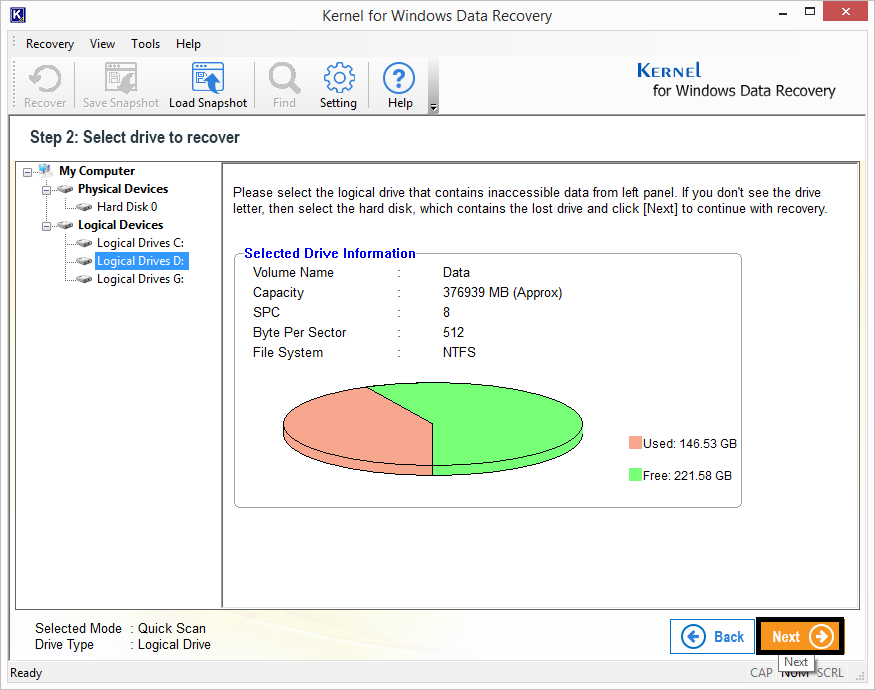
- View complete drive information and click Next to start the scanning of the drive.
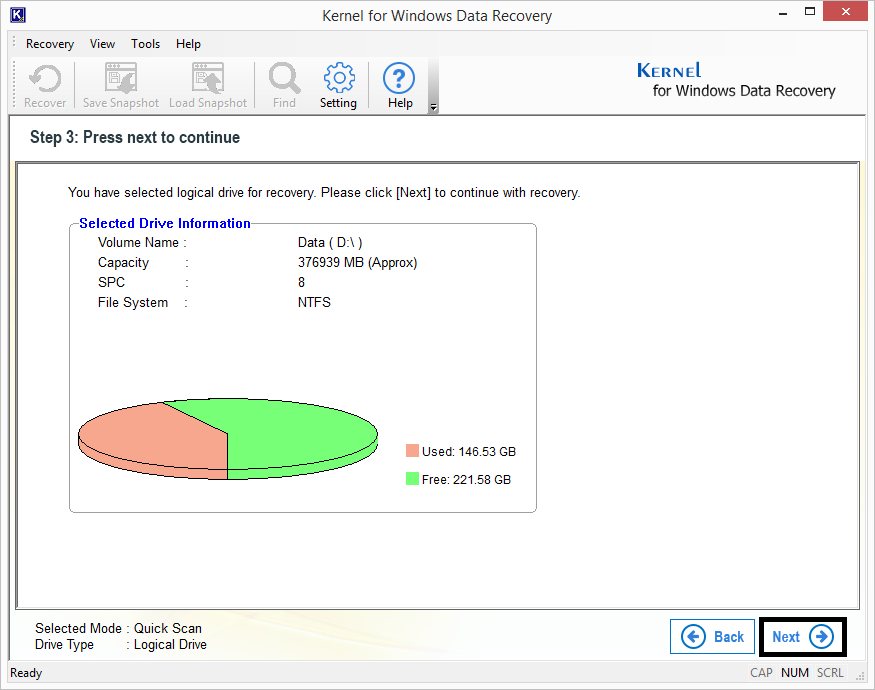
- Once the scanning process is completed, a dialogue box will appear saying that if the desired files are not retrieved using this scan, users can switch to the different scan mode (Deep Scan). Click OK to continue.
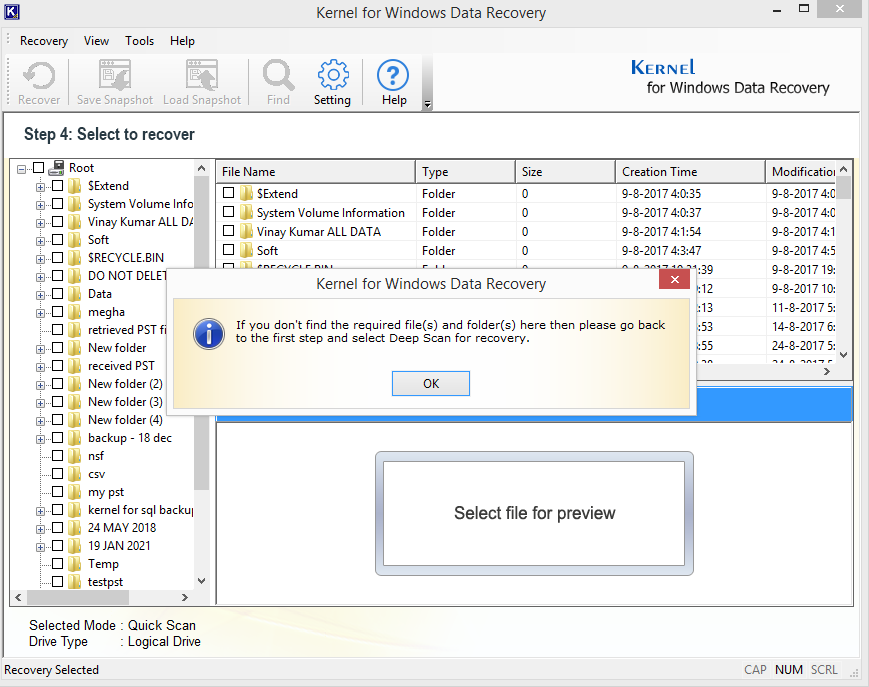
- All the files and content (including permanently deleted ones) within the selected drive will get retrieved. Users can manually find the Excel files for repair by selecting the folder from the right panel; click the Recover option.
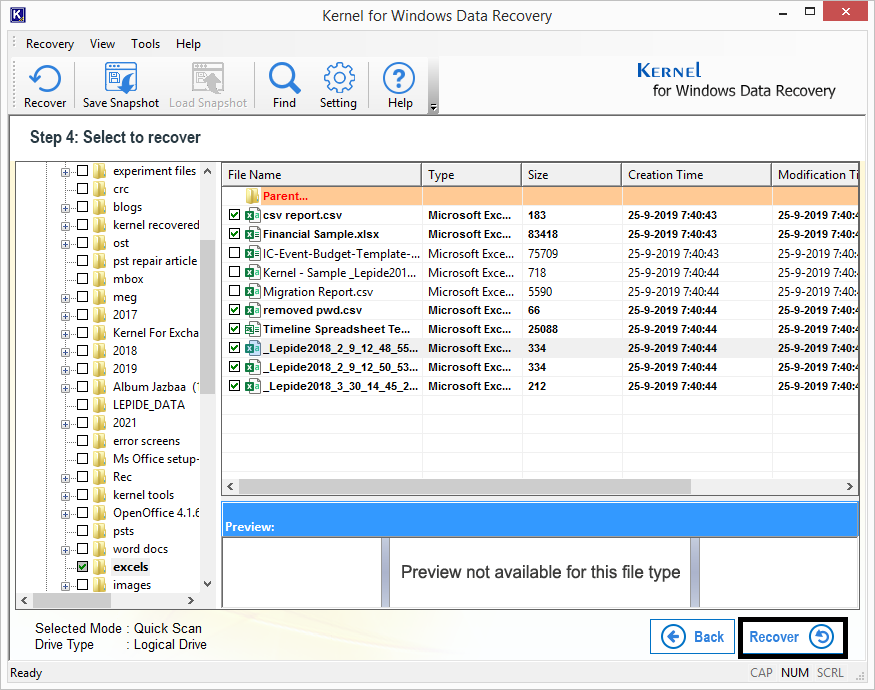
- If there is any difficulty in finding recovered Excel files from a lot of folders in the drive, users can utilize the Find option at the top to find Excel files on the file extension pattern. All Excel files will get retrieved from which users can make the selection and click the Save Selected File option to recover them.
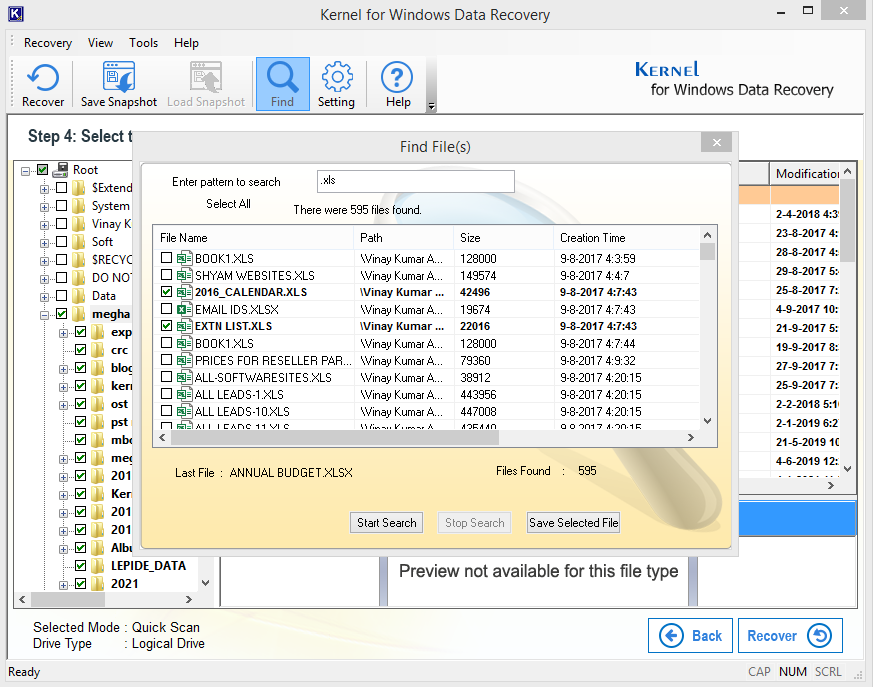
- Next, provide the destination folder for saving the recovered Excel files or you can create a new folder with the Make New Folder at the desired location providing a name to it. Then, click OK.
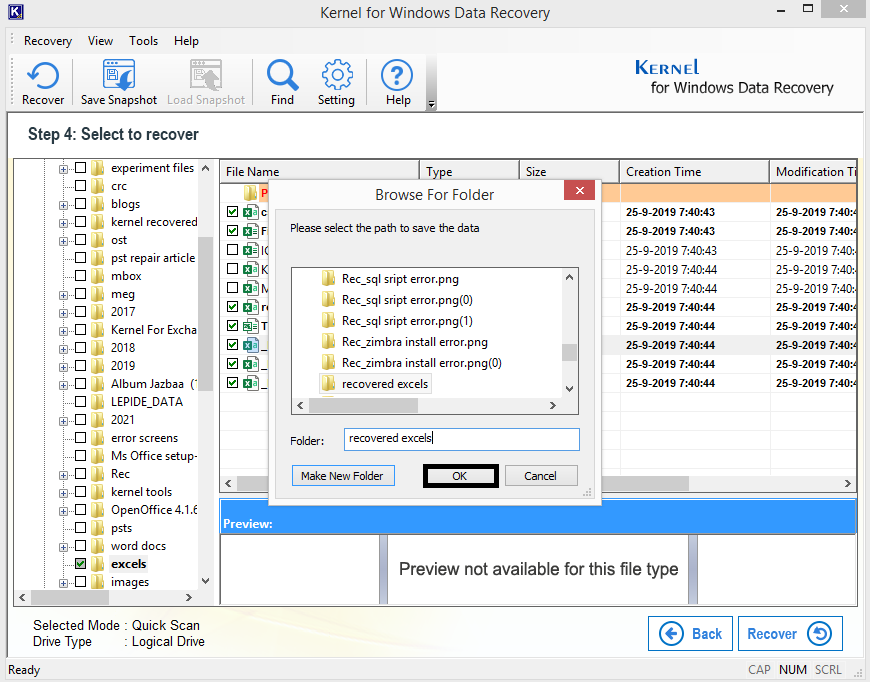
- The recovery process will start, and the Excel files will be successfully saved at the specified destination.
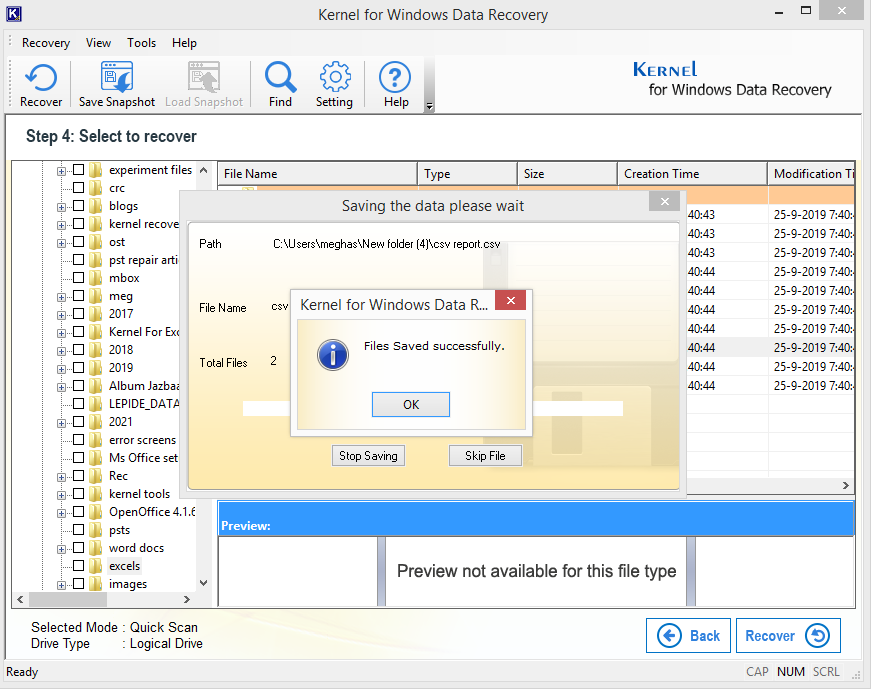
Hence, we have just learned the easiest and efficient way to recover permanently deleted files on Windows system drives via the Windows Data Recovery tool.
Well, there are a few manual ways to recover deleted Excel files manually; let’s discuss them one by one:
- Recycle Bin
- Go to the Recycle Bin and locate the deleted data, right-click on it, and select Restore.
- As you click on the Restore button, the selected data will be moved to the folder it was once in.
- Restore from Previous Versions
- Go to the folder where you kept Excel files, and from the right-click menu, select Properties.
- In the new dialogue box, go to the Previous Versions tab.
- From there, select the version and click on Restore.
- Now you can access your files.
No matter what you have deleted from your system, it goes directly to the Recycle Bin. If you haven’t already checked the Recycle Bin for your lost data, you need to do it now.
Another way to recover deleted data from Windows is by using its Previous Versions feature. This feature can restore any type of lost data if you have enabled it. To do this, follow the below-mentioned steps:
So, these were the tricks you can use to retrieve your Excel files if deleted by mistake; you can also refer to 5 Simple Tips to Recover Corrupt Excel Files for a better insight. Now, what if Excel files become corrupt or damaged due to these manual solutions or due to any other reason? Keep reading.
Repair Excel files with Excel Recovery
Excel Recovery is an automated tool that repairs corrupt, damaged, broken, or inaccessible Excel files. This is an incredible tool in terms of user-friendliness and smooth user experience. If you want to repair and recover Excel files in a few easy steps, we recommend Excel Recovery for it.
Download and Install the tool in your system. Run the tool successfully and follow the instructions given by the tool.

Conclusion:
We have discussed the ways to recover deleted and permanently deleted Excel files. Some manual Excel recovery tricks and a permanent solution Windows Data Recovery tool is discussed in detail for recovery of Excel and other files (even permanently deleted). We have also discussed a way to fix corrupt, damaged, or broken Excel files with the help of Excel Recovery. Hope this blog helps you.
A. The tool offers a complete real-time preview of the repaired Excel files with a clear display of data and statistics.
A. Yes, of course. The tool supports exclusive recovery of all file types in the Windows system drives deleted at any time.
A. There are three scanning modes integrated with the advanced Windows Data Recovery tool for the swift data recovery of corrupted, inaccessible, and deleted Windows data files.
Quick Scan: To recover recently deleted file(s) and folder(s)
Deep Scan: For data recovery in cases of hard disk format, partition deletion, recreation, etc.
File Trace: To perform intense scanning when Quick Scan and Deep Scan modes failed to provide the results.
A. Yes, there is. Users can go to the Settings option at the top of the tool’s interface and select one of the options to manage duplicate files in the recovery – Rename duplicate file(s), Overwrite duplicate file(s) or Skip duplicate file(s).
A. Users can find the free trial version of the Windows Data Recovery tool at the link – https://www.kerneldatarecovery.com/windows-data-recovery.html. The free version of the Windows Data Recovery tool allows all functions except that it saves up to 2GB of data only.

